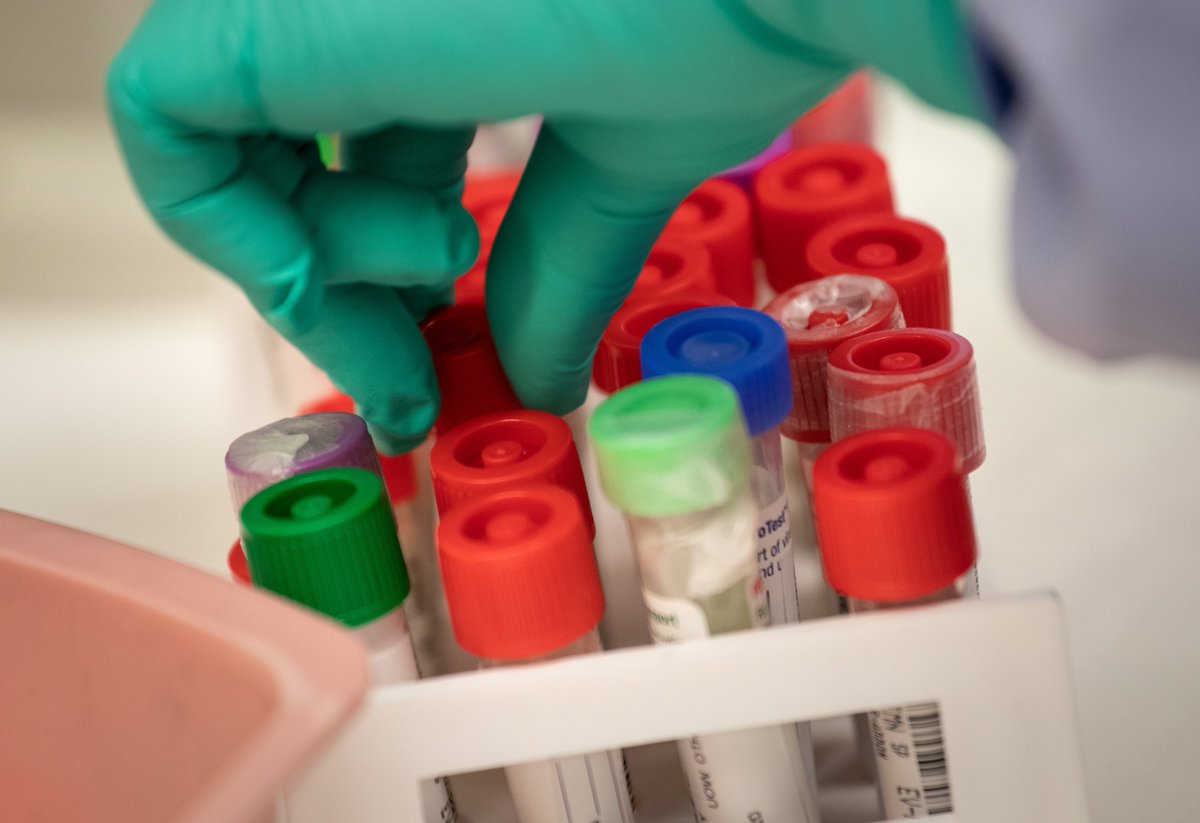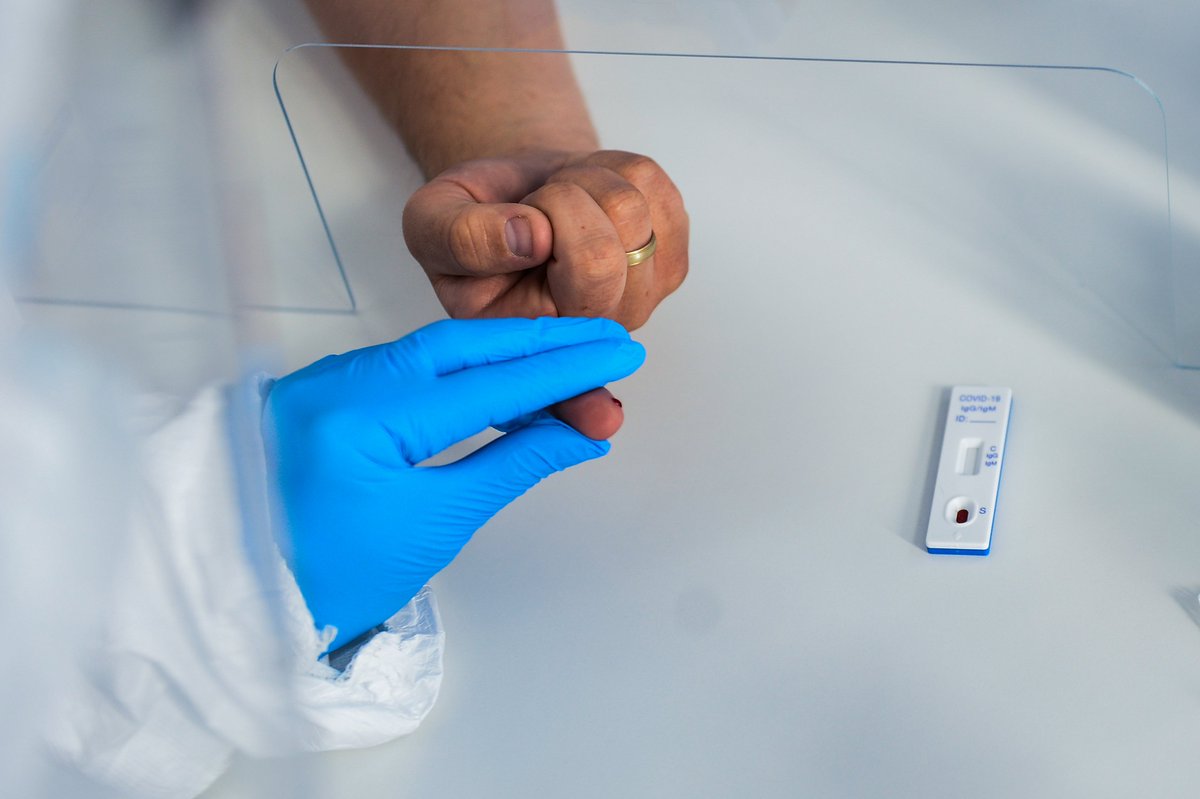We& #39;ve heard a lot about coronavirus testing over the past few months. We& #39;ve heard about shortages of tests. Faulty test kits. And people denied testing because they weren& #39;t sick enough. But how do coronavirus tests even work? It& #39;s complicated. (1/23)
In order to fight a pandemic, you have to know who& #39;s infected. That enables you isolate those who are sick, and quarantine those who might be. But the novel coronavirus is just that: novel. We didn’t have a test for it at first — so researchers had to make a new one. (2/23)
After the coronavirus was detected in China, officials shared the viral genome – essentially, the genetic blueprint for the virus. That was important, because it let researchers around the world design tests that looked for snippets of that genetic material. (3/23)
This kind of test, which usually uses a technology known as rt-PCR, should be able to identify whenever someone is shedding the coronavirus. Just like how each species has unique DNA, every virus has a unique genetic code (in this case, RNA). (4/23) https://cnn.it/3e8w4ND ">https://cnn.it/3e8w4ND&q...
If the test finds pieces of that code in a patient& #39;s sample – like a nasal swab – then they& #39;re considered infected. The test itself takes anywhere from a few minutes to a few hours to run, but it can sometimes take days to get results. (5/23)
That& #39;s important for a couple of reasons. If somebody is suspected of having the virus, doctors will have to take extra precautions. That means using valuable protective equipment – like masks and gowns – even if the patient ends up testing negative. (6/23)
And if somebody actually does have the virus – but can& #39;t get test results for days – then they may not take the precautions they should. Luckily, testing capacity in the US has increased, but officials are still reporting unacceptable delays around the country. (7/23)
But there& #39;s another type of test that you& #39;ll probably be hearing a lot more about: antibody tests. These are blood tests, but they don& #39;t actually test for the virus itself. Instead, they look for your body& #39;s immune response to the virus – antibodies. (8/23)
These tests matter because they can identify who& #39;s been infected in the past. That lets researchers understand how prevalent the virus really is or was – including among people who showed few or no symptoms. (9/23)
Antibody tests tell us something else, too. They let us know who might be immune to the virus – in other words, who might be protected against getting infected in the future. (10/23)
Most experts think that after someone recovers, they& #39;ll probably have some sort of protection against the new coronavirus. But how long that immunity will last, and how strong it& #39;ll be, is still unclear. (11/23)
There are dozens of antibody tests out there, and so far one has been authorized by the FDA for clinical laboratory use. That& #39;s important — because there are a number of companies making false claims about their own tests, which can be dangerous. (12/23)
False positives – a test that mistakenly says you have antibodies to the virus – can give people a false sense of security, making them think they& #39;re immune when they& #39;re not. (13/23)
And false negatives are problematic as well. Even high-quality antibody tests might miss circulating antibodies because our bodies can take some time to produce them. (14/23)
That& #39;s why antibody tests alone shouldn& #39;t be used to diagnose or exclude a previous infection, at least for now. But they& #39;re still useful, and they& #39;re key to understanding just how widespread the virus really is. (15/23)
Dr. Anthony Fauci, the director of @NIAIDNews, told CNN this morning that “a rather large number” of these tests will be available within a week or so. (16/23) https://twitter.com/NewDay/status/1248569598850539520?s=20">https://twitter.com/NewDay/st...
And hopefully both of these types of tests do become more widely available. Remember, none of this matters unless people can actually get tested on a mass scale. (17/23)
That doesn’t mean everyone needs to be tested, but millions more tests will need to be performed to understand how widespread the infections really are. (18/23)
Bottom line: If we& #39;re going to start lifting social distancing measures – whether in a few weeks, or a few months – we& #39;ll need the capacity to test aggressively. (19/23)
We’re not there yet. There are places in the US where people can get tested at drive-through sites – but there are also places where it’s extremely difficult to get a test unless you’re hospitalized. And the US still hasn’t run as many tests per capita as hard-hit Italy. (20/23)
That will need to change when we start to re-open this country. We’ll need to identify any new cases quickly. We& #39;ll need to isolate those who are infected. And we& #39;ll need to figure out whom they& #39;ve had contact with. (21/23)
Test and Trace and Treat. That’s how we’ll prevent – or limit – future surges. (22/23)

 Read on Twitter
Read on Twitter






